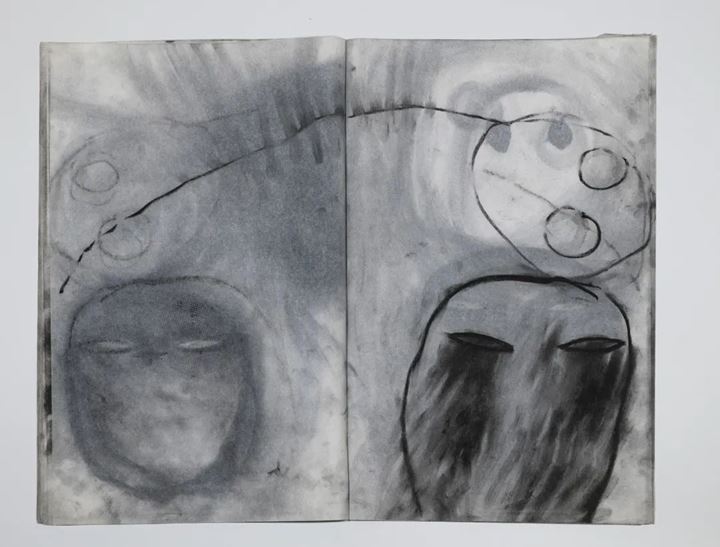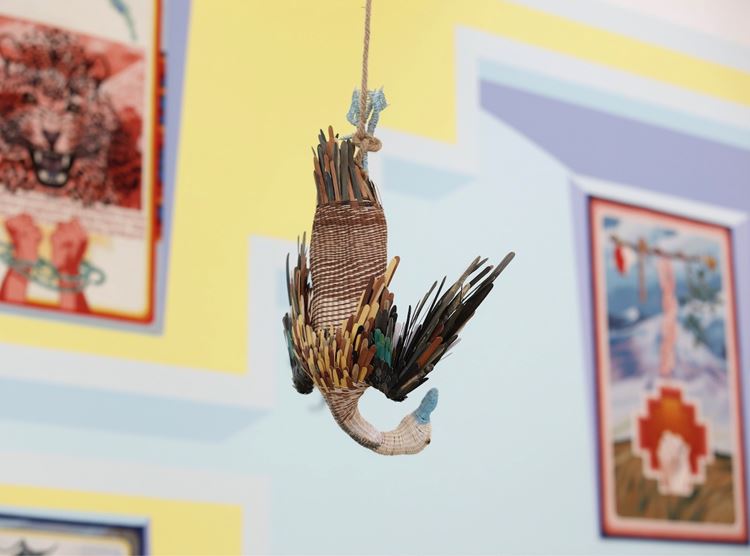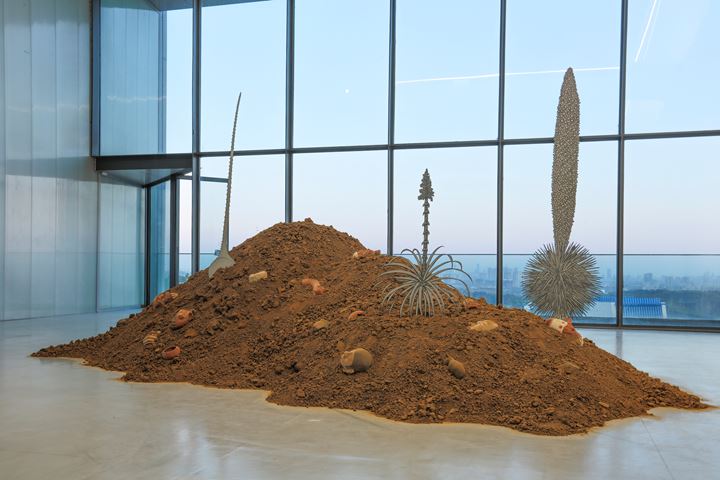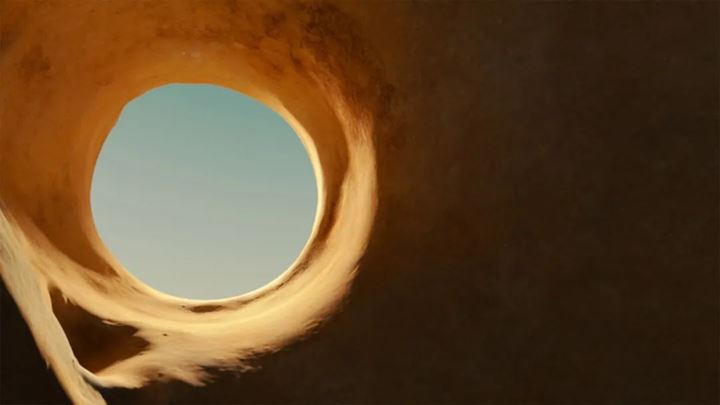Ten Thousand Things is a relational encounter between two artists, Miriam Cahn and Claudia Martínez Garay, orchestrated by curator Xiaoyu Weng at Sifang Art Museum in Nanjing, China (8 November 2020–23 May 2021).
The exhibition’s title refers to an ancient description of the world’s networked intricacy, as articulated in the I Ching and the foundational Taoist texts. ‘The ten thousand things all come from the same seed, and with their different forms they give place to one another’, states the ancient Zhuangzi: ‘Beginning and end are part of a single ring and no one can comprehend its principle.’

That fluid totality—in which everything is at once connected through a shared origin and yet distinct—is what binds the expressive universe that Weng has conjured among Cahn’s and Garay’s works.
Opening the show is a site-specific installation by Garay of tarot-like tapestries made from brightly coloured tufting that references the Andean concept of Pachakuti, a Quechua word that translates to the return or overturning of space-time; a total transformation.

Each tapestry contains an assemblage of symbols whose associations are at once specific and universal. In the case of Huk Pacha (2020), a branch cutting across the top of the frame bears a half-eaten apple, a wood and stone pick, two hanging snakes, and an eagle’s head; while in Suqta Pacha (2020), a pair of arms break free from green ties binding their hands as a leopard lunges forward above.
Across the museum’s three floors, Garay has created a staging of three time-spaces. The second-floor ‘upper world’ includes El Creador / The Creator (2019), which was included in the 16th Istanbul Biennial (14 September–10 November 2019): replica clay figurines referencing unexcavated objects from the Moche civilisation, famed for its pottery, are installed in a soil mound.

Punka/Portal (2020), a python-headed gateway based on the Gate of the Sun at Tiahuanaco, leads to the basement underworld, where Garay’s video ÑUQA KAUSAKUSAQ QHEPAYKITAPAS (2017), recently shown at the 12th Shanghai Biennale (10 November 2018–10 March 2019), is installed.
The title loosely translates from Mochica, a native language in Peru that was spoken across the Inca Empire at the time of the Spanish invasion, to ‘I will outlive you’—a statement that is not lost on the ancient tombs and mausoleums of Nanjing, one of the oldest capitals in China, where Sifang Art Museum is located.

Over surface scans of ceramic artefacts, Garay imagines the life of a human figurine that is more than 1,200 years old, exhibited at the Berlin Ethnological Museum through the prism of her own. The work functions like an overturning of colonialism’s ongoing erasures by interrogating its embodied legacies, in which the textures of time, memory, trauma, resistance, and becoming intermingle in open space.
Garay’s activation of multi-sensory, multi-relational dimensions connects with Cahn’s paintings, the most recognisable of which show figures emerging from rich and dynamic washes of pigment, as showcased at documenta 14 in 2017 and the Aichi Triennale in 2019.




